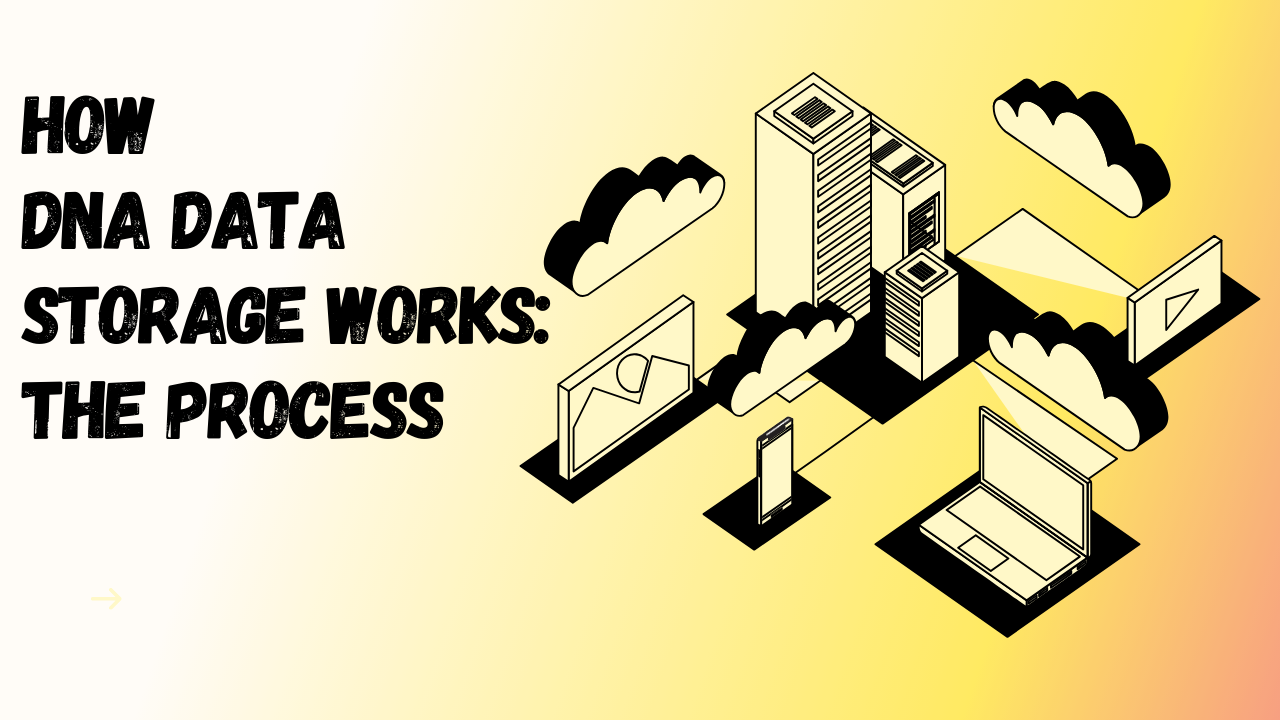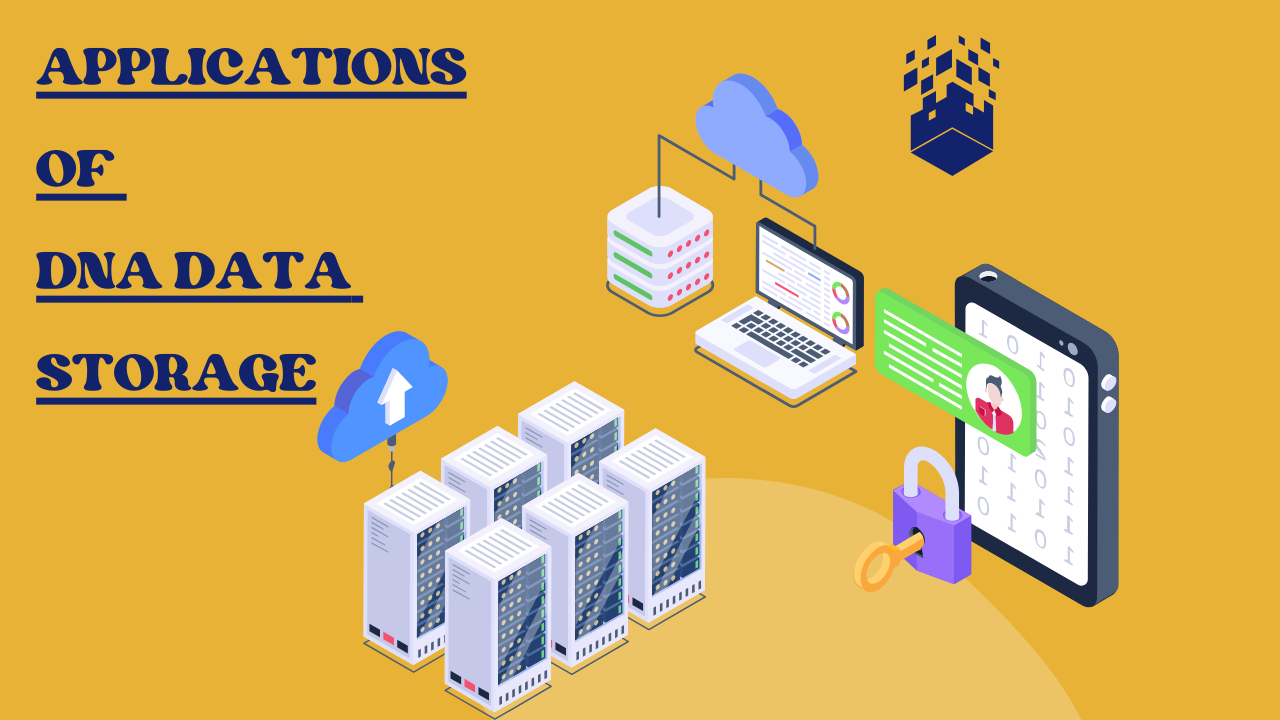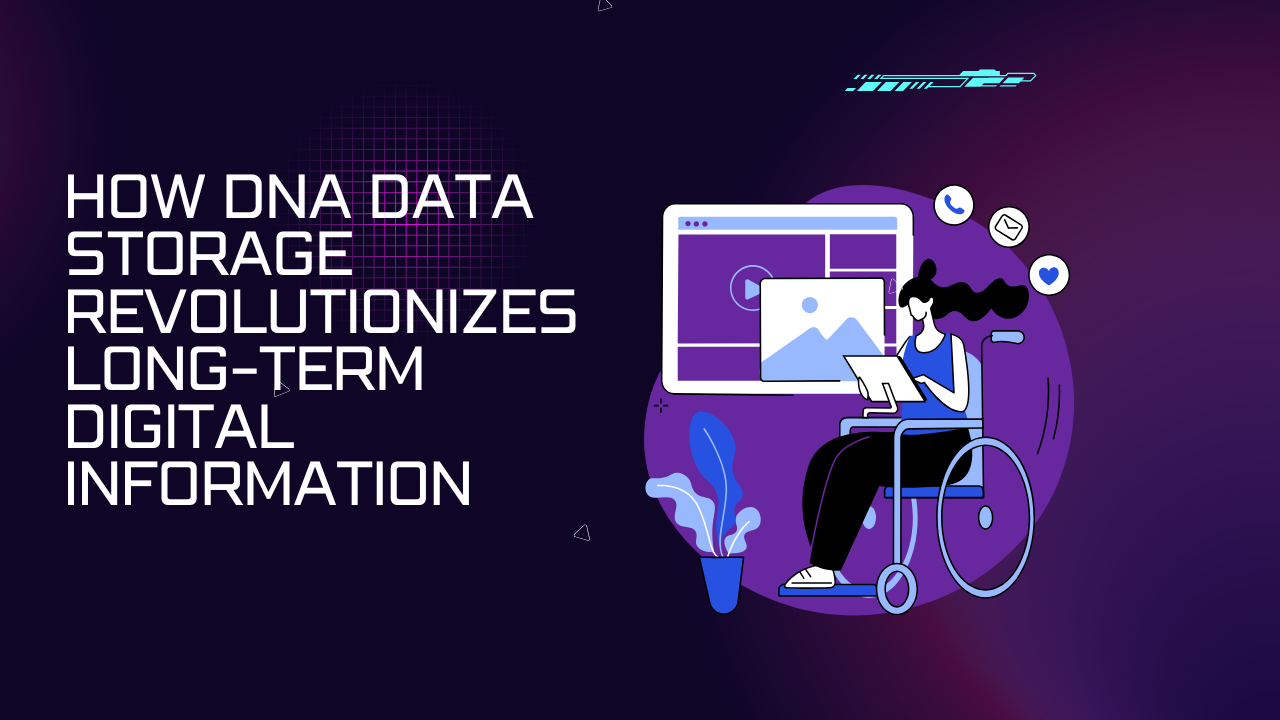In today’s digital age, the volume of data being generated has reached unprecedented levels. From personal photos and videos to scientific research and business records, data is rapidly accumulating, and with it, the need for efficient, sustainable storage solutions. Traditional data storage technologies such as hard drives, tapes, and cloud-based systems are struggling to meet the ever-growing demand for data storage due to issues like capacity limits, data degradation, and energy consumption. Enter DNA data storage: a groundbreaking solution that has the potential to revolutionize the way we store information for the long term. By harnessing the unique properties of deoxyribonucleic acid (DNA), the molecule that stores genetic information in living organisms, researchers are finding new ways to encode vast amounts of digital data in an incredibly small physical space, while ensuring durability and sustainability.
In this article, we will explore the mechanics of DNA data storage, its benefits, challenges, and how it could transform digital information storage in the future.
Introduction: The Need for a New Data Storage Solution
With the explosion of data generation in recent years, the current storage methods are under increasing pressure. Cloud storage providers and data centers, while offering scalability, often face limitations related to data access speeds, security vulnerabilities, and energy consumption. Moreover, hard drives and magnetic tapes, while effective for short-term storage, suffer from wear and tear and become obsolete over time.
To address these challenges, scientists have turned to DNA, which has been naturally storing information for billions of years. DNA, with its ability to hold vast amounts of information in a minuscule volume, offers a promising alternative to current storage systems. It has the potential to store data for centuries, even millennia, and can do so with minimal environmental impact.
Understanding DNA as a Data Storage Medium
DNA is made up of four chemical bases: adenine (A), thymine (T), cytosine (C), and guanine (G). These bases pair up in a very specific way, with adenine always pairing with thymine, and cytosine always pairing with guanine. The sequence of these bases forms the code that stores genetic information, essentially acting as a natural data storage medium.
To understand how DNA can be used to store digital information, it’s important to recognize that DNA and digital data both rely on binary systems. Digital data is composed of ones (1) and zeros (0), whereas DNA sequences use the four-letter alphabet (A, T, C, G). The process of converting binary code into DNA involves assigning these four bases to pairs of binary digits. For instance, “00” could correspond to adenine (A), “01” to cytosine (C), “10” to guanine (G), and “11” to thymine (T).
This encoding process allows any kind of digital data, whether text, images, videos, or software, to be transformed into DNA sequences. Once the data is encoded into DNA, it can be synthesized, stored, and later retrieved through sequencing.
How DNA Data Storage Works: The Process
Data Encoding
The first step in DNA data storage is converting digital information (binary code) into DNA sequences. Researchers develop algorithms that map the binary 1s and 0s into combinations of A, T, C, and G. This encoded DNA can represent any type of data, from files and images to large databases.
DNA Synthesis
After encoding the data into DNA, the next step is to synthesize actual DNA molecules that correspond to the digital data. This involves the use of chemical processes that produce short DNA strands with the exact sequence that represents the encoded data. Modern DNA synthesis technologies allow for the efficient production of long strands of DNA that store large amounts of information.
Data Storage
Once the DNA is synthesized, it can be stored in a controlled environment, typically in small vials or other secure storage systems. DNA is incredibly dense, meaning even large datasets can be stored in tiny physical spaces. One gram of DNA can hold up to 215 petabytes of data, which is equivalent to about 215 million gigabytes!
Data Retrieval
To retrieve data from the DNA, researchers must sequence the stored DNA. DNA sequencing is a well-established process that involves reading the sequence of bases (A, T, C, G) along the DNA strand. This sequence is then decoded back into binary code, and specialized software is used to reconstruct the original data in its digital form.
Advantages of DNA Data Storage
Incredible Data Density
One of the most significant advantages of DNA data storage is its incredible data density. As mentioned earlier, a gram of DNA can store up to 215 petabytes of information. This means that DNA has the potential to store more data in a fraction of the space required by current storage media. To put this into perspective, you could theoretically store the entire world’s digital data in just a few kilograms of DNA.
Longevity and Durability
DNA is remarkably stable and durable. It has the potential to last for thousands, even millions of years if stored properly. Unlike traditional storage media, such as hard drives or tapes, which degrade over time, DNA can maintain its integrity and readability for centuries. This makes it an ideal solution for long-term data preservation, especially for valuable or critical information.
Low Energy Consumption
DNA storage requires minimal energy after encoding and storing the data. Unlike data centers that run continuously and consume enormous amounts of energy. DNA storage only requires power for initial encoding and sequencing. This makes DNA a more sustainable and environmentally friendly solution for data storage. Especially as the world moves toward reducing energy consumption and carbon emissions.
Minimal Physical Space
As mentioned before, the physical space required to store DNA is negligible compared to traditional storage systems. The small physical footprint of DNA storage systems makes it possible to store vast amounts of data in secure, compact locations, reducing the need for massive data centers.
Challenges and Limitations of DNA Data Storage
While DNA data storage holds immense potential. There are still several challenges that must be addressed before it can become a mainstream solution:
High Cost
One of the main barriers to the widespread adoption of DNA data storage is the cost. The synthesis of DNA is currently expensive, as is the sequencing process. The cost of DNA storage is orders of magnitude higher than traditional storage systems. Which makes it difficult to justify for everyday use.
Slow Data Encoding and Retrieval
Another challenge is the speed at which researchers can encode data into DNA and retrieve it. While DNA is incredibly dense, the processes of encoding, synthesizing, and sequencing data are still slower than traditional storage methods. However, as technologies improve, we can expect these processes to become faster and more efficient.
Error Rates and Reliability
DNA synthesis and sequencing are not perfect processes and can result in errors. Such as base misinterpretation or loss of data. Developers must create error correction mechanisms to ensure that data can be reliably encoded and decoded. Advances in error correction algorithms will be crucial in addressing this limitation.
Applications of DNA Data Storage
Archival Data Preservation
One of the most promising applications of DNA data storage is archival preservation. Governments, museums, libraries, and corporations can use DNA to store historical records, cultural artifacts, and critical documents for long-term preservation. DNA’s durability makes it an ideal medium for safeguarding important information for future generations.
Scientific Research
DNA storage can be invaluable for storing large datasets generated by scientific research. From genomics to climate data and astronomical observations, DNA could provide a compact, long-term solution for preserving the vast amounts of data created by scientific endeavors.
Healthcare and Medical Data
DNA could play a significant role in the storage of patient data, medical records, and genomic information. Given the sensitive nature of healthcare data, DNA storage could offer a more secure and tamper-proof alternative to traditional systems, providing peace of mind for both patients and medical professionals.
The Future of DNA Data Storage
As DNA data storage continues to develop, we can expect it to play an increasingly important role in the digital landscape. In the future, DNA storage could become a mainstream solution for data centers, governmental archives, and scientific institutions. Additionally, it may even integrate with other advanced technologies. Such as quantum computing and artificial intelligence, to provide even more powerful data storage solutions.
Conclusion
DNA data storage represents a revolutionary approach to digital information management. Its incredible density, long-term stability, and energy efficiency offer a compelling alternative to traditional storage methods, making it an ideal solution for the ever-growing demands of data storage. While there are still challenges to overcome, including high costs and slow speeds, ongoing advancements in DNA synthesis and sequencing technologies hold the promise of making DNA storage a viable option for the future. As we continue to generate vast amounts of digital data, DNA data storage could become the cornerstone of long-term, sustainable, and secure data preservation.
FAQs
How much data can DNA store?
One gram of DNA can store up to 215 petabytes of data, making it far more compact than any existing storage medium.
Is DNA data storage cost-effective?
Currently, it is expensive, but as technologies advance, costs are expected to decrease over time.
How long can DNA store data?
DNA is incredibly durable and can last for thousands or even millions of years if stored properly, offering unprecedented longevity compared to traditional storage media.
What are the main challenges with DNA data storage?
The main challenges are the high cost of synthesis and sequencing, slower encoding and retrieval speeds, and error rates during data encoding and decoding.
What are the potential applications of DNA data storage?
It can be used for archival preservation, scientific research, medical data storage, and more, providing a sustainable solution for long-term data management.

